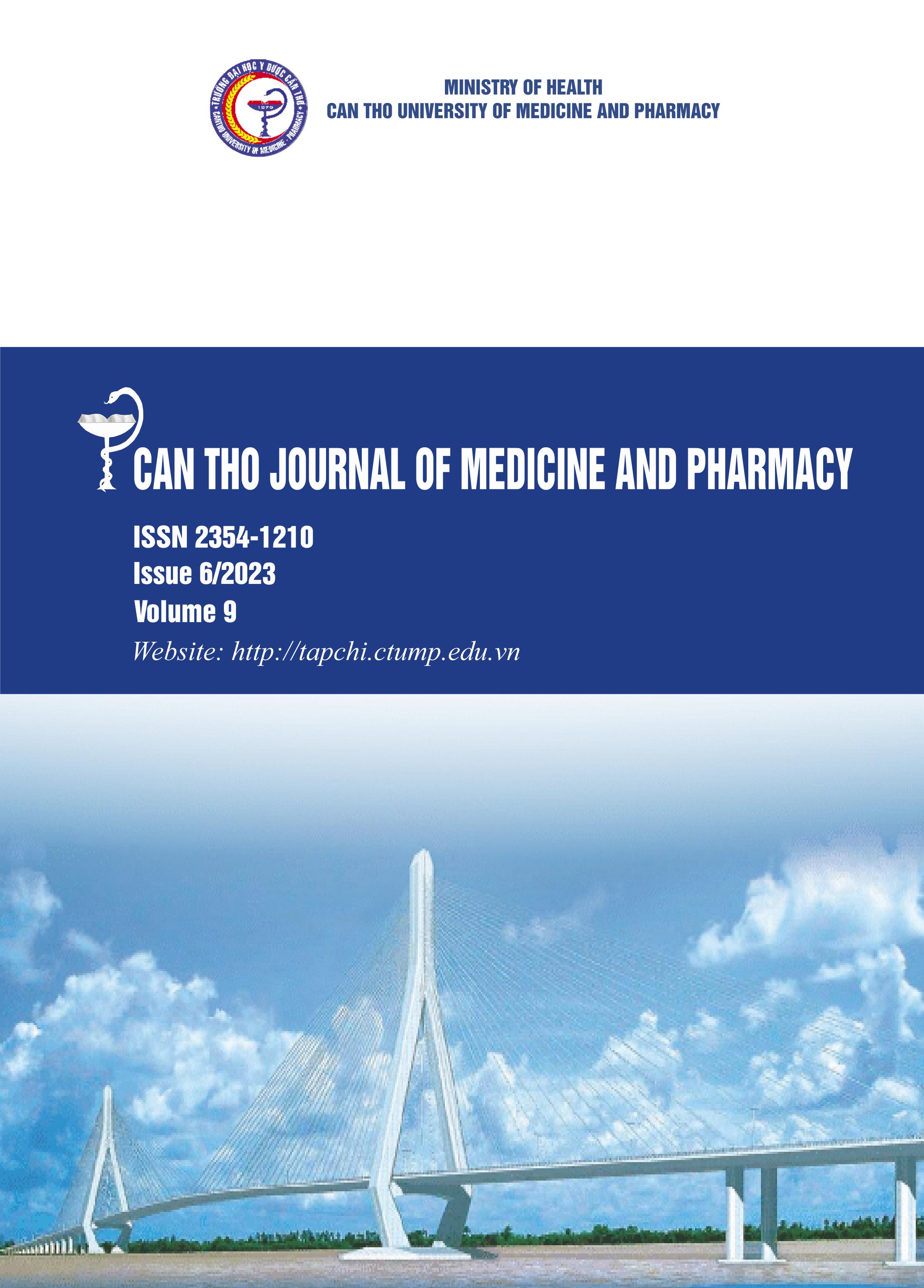RESEARCH ON THE PREVALENCE, CLINICAL CHARACTERISTICS, AND RELATED FACTORS IN ACNE VULGARIS PATIENTS WITH DEMODEX INFECTION IN CAN THO CITY FROM 2021 TO 2023
Nội dung chính của bài viết
Tóm tắt
Background: Acne is a common disorder, associated with inflammation of the sebaceous and bacterial hair follicle units and has diverse clinical manifestations. The most commonly mentioned causes and factors associated with the onset of acne in adulthood are hormones, antibiotic-resistant bacteria, and the use of drugs and cosmetics. In particular, the increase in the number of Demodex mites due to the habit of using cosmetics of unknown origin, has caused complicated clinical symptoms and difficulties in the treatment of acne today. Objectives: To determine the prevalence, clinical characteristics and some related factors in patients with acne vulgaris superinfected with Demodex. Materials and methods: A cross-sectional descriptive study with analysis was conducted on 154 acne vulgaris patients visiting medical facilities in Can Tho city in 2021-2023. Results: The study included 154 acne vulgaris patients with an average age of 22.16 ± 6.739 years old, with males constituting the majority. Among the patients, 29.87% had Demodex infestation, and 9.74% of them had a Demodex density of 5 or more mites. The majority of acne cases were of moderate or higher severity, with the most severe cases accounting for 85.7% of those with Demodex presence. Clinical features observed in patients with Demodex infestation included closed comedones (97.8%), open comedones (93.5%), papules (63%), pustules (60.9%), and cystic nodules (52.2%). Additionally, 93.5% and 91.3% of patients reported symptoms of peeling skin, but only 50% reported a feeling of ants, which appeared to be related to Demodex infection in acne patients. Furthermore, habits such as sharing towels, makeup, and wearing masks for more than 8 hours were identified as risk factors for Demodex infection. Conclusions: The presence of Demodex in acne patients is associated with a variety of clinical manifestations, including acne accompanied by skin peeling, scaling, and itching sensation. The relationship between Demodex infestation and the sensation of ants requires further investigation. Additionally, papules, pustules, and crawling sensations were also found to be related to Demodex infection. Moreover, certain habits, such as sharing towels, using makeup, and wearing masks for prolonged periods, appear to be risk factors for Demodex infection in acne patients
Chi tiết bài viết
Từ khóa
Demodex, acne vulgaris, isotretinoin
Tài liệu tham khảo
2. Nguyen Thi Ngoc Anh. Research on Demodex infection in acne patients. University of Medical and Pharmacy, 2020. 1-122.
3. Khuu Bach Xuyen, et al. Study on Demodex infection in acne patients at Can Tho Dermatology Hospital in 2013. Journal of Vietnamese Medicine. 2014. 1(2), 3-8.
4. Huynh Bach Cuc. Research on fungal and Demodex infections on adult acne patients visiting Can Tho Dermatology Hospital in 2015. Can Tho University of Medicine and Pharmacy, 2015.
5. Akcınar U.G., Unal E., Dogruman A.F. Demodex spp. as a possible aetiopathogenic factor of acne and relation with acne severity and type. Postepy Dermatol Alergol. 2018. 35(2), 174-181. https://doi.org/10.5114/ada.2018.75239.
6. Wang L.M., et al. Investigation on Demodex infections among university students in Kunming City. Zhongguo Xue Xi Chong Bing Fang Zhi Za Zhi. 2020. 32(4), 428-431. https://doi.org/10.16250/j.32.1374.2019253.
7. Badawi Y.A., et al. Demodex Mites in Relation to the Degree of Acne Vulgaris among Egyptian Patients. Pak J Biol Sci..2022. 25(5), 406-414. https://doi.org/10.3923/pjbs.2022.406.414.
8. Trinh Tien Thanh, Huynh Van Ba, Tran Dang Quyet. Study on clinical characteristics of common acne patients who come for examination and treatment at the hospital of Can Tho University of Medicine and Pharmacy in 2018-2019. Journal of Vietnamese Medicine. 2019. 505(1), 45-48.
9. Zhao Y.E., et al. Sociodemographic characteristics and risk factor analysis of Demodex infestation (Acari: Demodicidae). J Zhejiang Univ Sci B. 2011. 12(12), 998-1007. https://doi.org/10.1631/jzus.B1100079.
10. Pham Thanh Thao, et al. Research on fungal infection, Demodex, clinical characteristics and some related factors of acne at Can Tho Dermatology Hospital in 2021. Vietnamese Journal of Dermatology and Venereology. 2021. 39(1), 34-42.
11. Elamin W, et al. Demodicosis in Different Age Groups and Alternative Treatment Options-A Review. J Clin Med. 2023. 12(4), 1649. https://doi.org/10.3390/jcm12041649.


